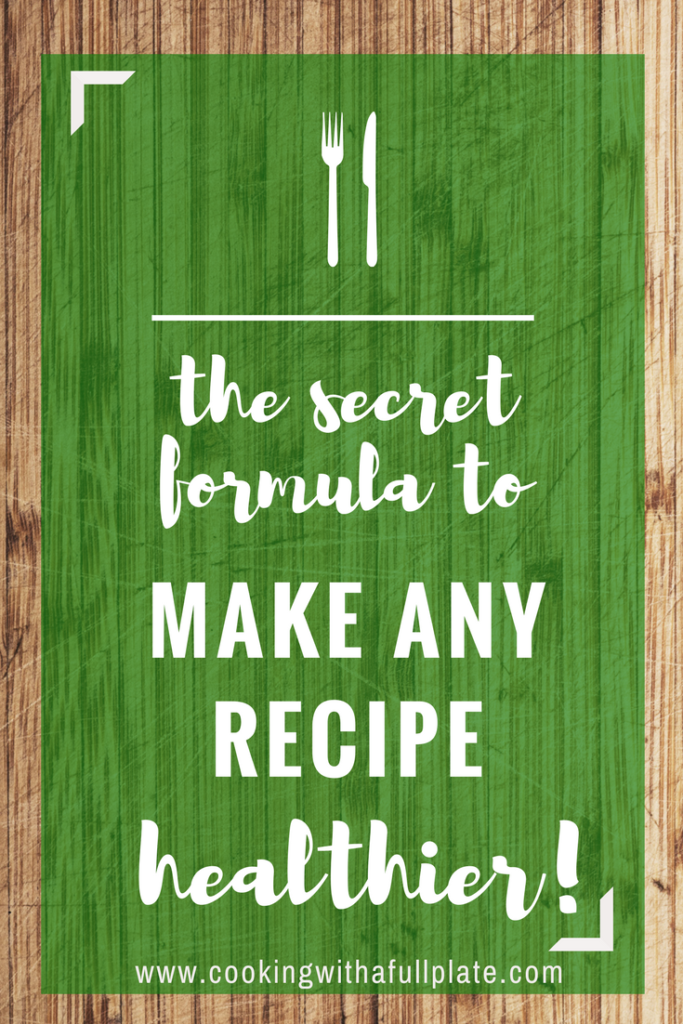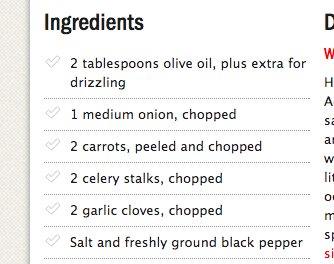So you want to eat clean this year. You’ve saved all the recipes, read all the books, and joined all the Facebook groups. But when it comes down to it do you really want to be eating that detox vegetable soup all week? And don’t even get me started on what your family thinks. What if you had the secret to make any recipe healthier?
When it comes down to it, “healthifying” recipes is really more art than science. The best way to get better at it is to do it more often, to experiment, and to be open to some so-so experiences.
The payoff? First off, you will be a more confident cook who doesn’t always have to follow a recipe to the T, But perhaps even more importantly, you’ll be able to take favorite recipes and make them better suit your diet and health goals, resulting in food that’s both healthy and delicious.
My Secret Formula to Making Any Recipe Healthier
But first, a disclaimer: This formula I’m about to share is best used with discretion, like a magic spell. What I mean by that is, don’t go trying to use it on every single recipe you’ve ever tried and loved. That secret family cheesecake recipe? You’re better off leaving that recipe untouched and only making it on special occasions.
On the flip side, this formula works best on cooking (not baking) recipes that have lots of flavor but may be overloaded in fat and calories or underloaded in nutrition. Will it taste exactly the same? Maybe not right away. Will it make your favorite recipes more guilt-free? Yep.
Let’s get started:
Cut Down on the Refined Fats
Read 10 different health sites and you’ll find at least 12 different opinions on fats. So putting health evidence and personal preference aside, here’s an undeniable truth: refined fats (think butters and oils) are a concentrated source of calories. When you start adding ½ cup of olive oil, healthy or not, you’ve piled on 955 calories to your recipe that you probably don’t notice or appreciate.
In most cases I’ve found that you can cut the oil content of a recipe by about ½ with little effect. Again, this is for cooking, not baking which is much more of a precise science. There are a number of cooking examples where proportions are vital too (making a roux and vinaigrette to name a few) but for many other recipes the amount of oil is more arbitrary and easily worked around.
Check out this example:
From Giada De Laurentis’ Lentil Soup Recipe
This certainly isn’t the most extreme example because she’s only using 2 Tbsp olive oil to saute the veggies but let’s say you want to save about 120 calories without changing much. Here’s what I do:
- Cut the amount of oil used to saute in half
- If needed, add a little broth or water to the pan as you saute (I’m talking 1 Tbsp-ish) to keep everything from sticking and help with cooking
- Proceed with the rest of the recipe as written
Easy peasy!
Add More Vegetables
An easy way to decrease the calorie density of your meal (concentration of calories) is to add light-in-calorie vegetables in a great quantity than the recipe calls for. BTW, this is an easy strategy at a restaurant too. For example, when I go to Thai food I always ask for them to add extra veggies, usually to the tune of about $1, which bulks up the nutrition in my meal.
So how do you do this at home? I was going to give you some fancy-pants example, but we can be honest here, right? At least a couple times a month this involves taking a box of Annie’s Mac N Cheese, cooking the pasta according to the package directions, adding in a couple handfuls of frozen broccoli in during the last 2 minutes, draining it all, then mixing with the cheese sauce.
Is this a perfect meal? Nope. Is it healthier than just the mac n cheese solo and in a form that my son is more likely to eat? Yep. #momwin
Switch to Whole Grains When Possible
This one gets easier and easier with the greater availability of whole grain and alternative options. In most cases I’ll literally just take the recommended white pasta or bread and switch in our favorite brown rice or whole wheat alternative.
Some of my favorite brands for this are:
The result?
- Higher nutrient content
- More fiber
- Less processed ingredients (always something I’m trying to balance with a little one)
And honestly? That’s it. So while I’m always trying to pick healthy recipes, these are some of the strategies that I use to make just about any recipe healthier.


Amazing blog full of useful information!